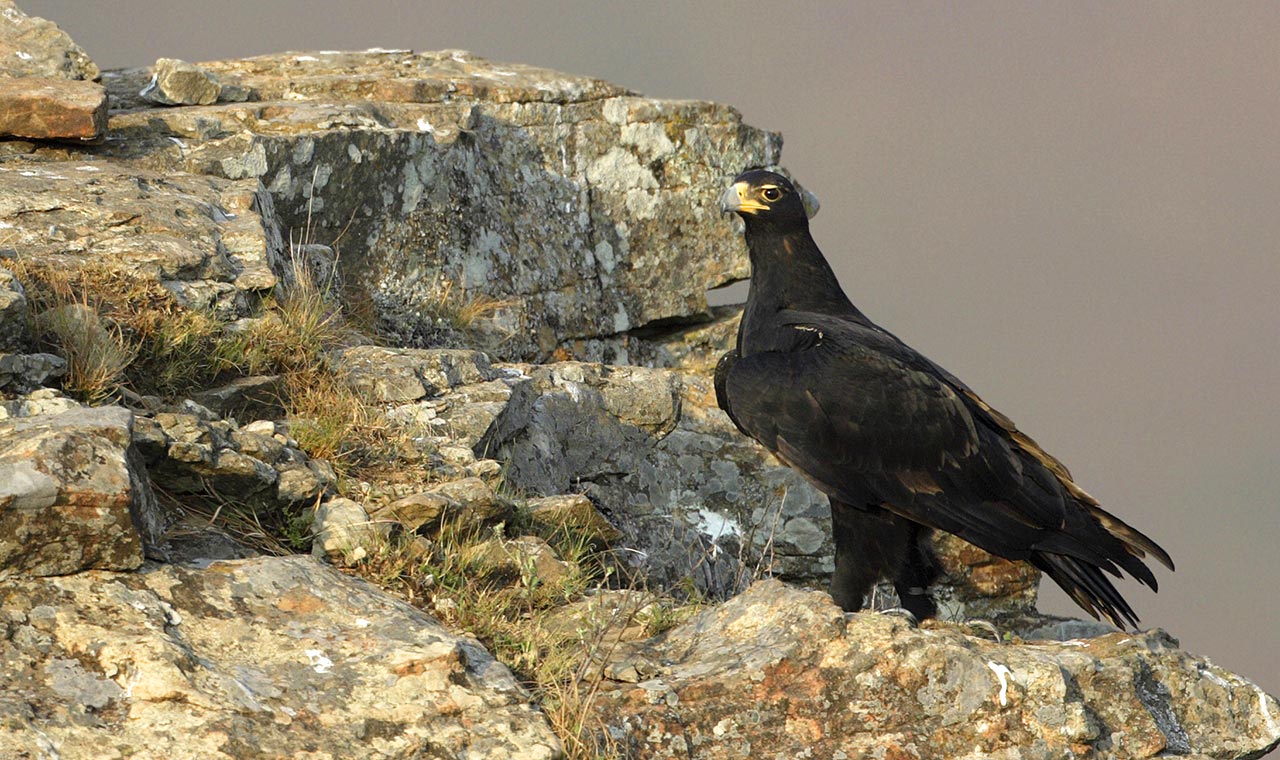Social Structure
Verreaux’s eagles usually live in pairs, though some are solitary. Either way, they are fiercely territorial.
Communication
Birds in courting displays give a high-pitched scream sprinkled with barking sounds.
Behavior
Verreaux’s eagles hunt by suddenly sweeping around a mountainside or a cliff to catch hyraxes off guard. Because they can pull in their wings slightly, these eagles can fly in high winds that ground other birds.
Conservation
Overall, the population of Verreaux’s eagles appears to be stable. It is listed as lower risk by the International Union for Conservation of Nature (IUCN).
Diet
Verreaux’s eagles favor hyraxes, but when they are scarce, the birds will eat hares, guineafowl, tortoises, and klipspringer (“rock jumper”) lambs that can weigh more than 26 pounds (12 kg).
Breeding
The Verreaux’s eagle nests on rocky ledges and builds a huge nest of sticks lined with leaves. The female lays one to 2 eggs, which are incubated for 43 to 46 days by both adults. The Verreaux’s eagle practices what ornithologists call “obligate siblicide.” If two chicks hatch, the younger almost invariably dies of starvation or bullying by its sibling. The surviving chick stays in the nest for almost 100 days. After it fledges, it will follow its parents for about six months.
Population in Kenya
In Kenya, the range of the Verreaux’s eagle extends over the western part of the country.
Range & Habitat
Verreaux’s eagles live in the same habitat as hyraxes: mountains, bush and wooded grassland, and semiarid terrain from sea level to 11,480 feet (3,500 m). Their range extends from the coastal mountains of Angola around the tip of Africa to Zimbabwe; through the Rift Valley from Eritrea to Tanzania, then west to the Democratic Republic of the Congo; and along the Chad-Sudan border, with several small areas on the Arabian Peninsula.






